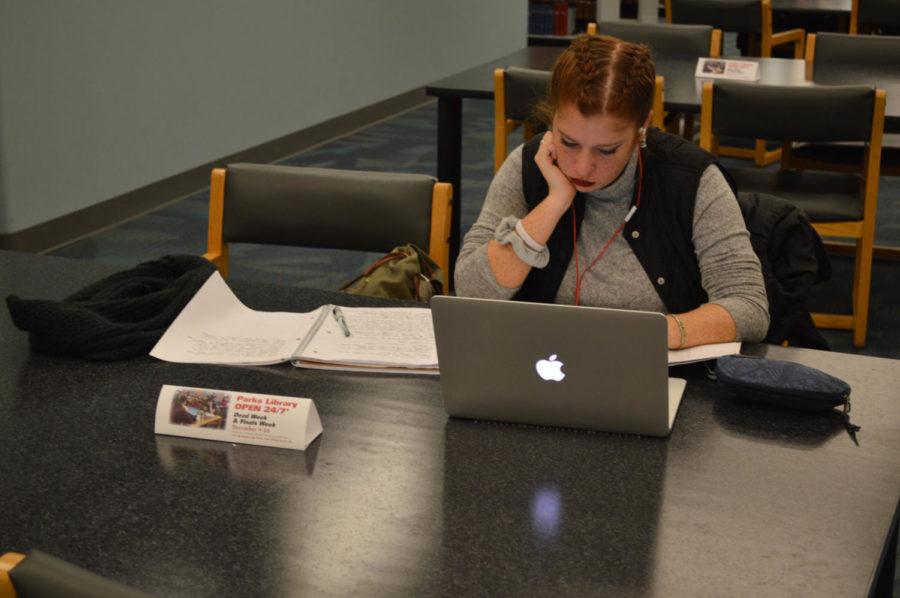How you should study for midterms
Maddie Leopardo/Iowa State Daily
Annie Edelman, sophomore in journalism, studies at Parks Library on Dec. 2. 2016.
February 23, 2018
Ah, midterms.
If you’ve made it this far, you’re practically halfway through the semester. Chances are, you’ve probably have a few exams coming up as well.
Here are a handful of study tips from the Academic Success Center:
Taking notes
- Read and outline chapters before class. This allows you to add important information to your outline, without having to write down everything your professor is saying.
- Take notes in the margins with questions you have, personal experiences and specific information you found interesting or important.
- Add illustrations to your notes. Create timelines and diagrams from dates and scientific class systems.
- Try creating color-coded notes to help remember important information. For example: Yellow = people, green = places and orange = dates.
In class
- Keep your attention focused on what the teacher is saying. Listen for signals of important things to remember, such as “The most important point…” and “Remember that…”
- For each class, sit in the same seat every day, especially when you have a test. Your body will associate this area with learning and concentration will improve.
Studying
- Identify a ‘study space’ where the bulk of your time spent in the same space is used solely for study purposes. After a week of using the same space for the same activity (to study), your body will associate that space with studying and will help you focus.
- Schedule study times, if possible in the same place at the same time. Make a calendar of your daily routine including meals, class and sleep time to find hidden free-time that can be used for a quick review of notes.
- Review your notes 10 minutes each day to move the information to long-term memory.
- Study difficult or “boring” subjects first. The courses we find most difficult often require the most creative energy. Save your favorite subjects for later.
- Take consistent short breaks during lengthy study times: 10 minutes for every hour of study and five minutes for every half-hour.
- Keep your study space well lit. If your study area is lit by a high ceiling light, use a smaller lamp to illuminate your workspace. This will reduce eye strain and headaches.
- Use waiting time; five minutes waiting for a bus, 20 minutes waiting for the dentist, 10 minutes in between classes – waiting time adds up fast. Have short study tasks ready to do during these periods.
- When studying, keep a notebook handy to write down any distracting thoughts, helping you to focus only on the information you are studying and putting your mind at ease so you won’t forget what it is you are concerned about.
- Don’t stay up all night cramming for a test the next day. Aside from being too sleepy to think effectively, your mind generally will only remember the first and last 30 minutes of what you studied.
- Apply what you’re learning to real life situations. Finding these applications will make your studying more exciting, and will help you remember what you need to know.
- Study immediately after lecture classes. Retention and understanding are enhanced by studying right after class.
- Study during your prime time. We all have daily cycles of sluggishness and alertness. If your work, classes and circumstances permit, make use of this knowledge. Schedule your hardest subject at your most alert time.
Lastly, use academic support resources on campus. The Writing and Media Center, Supplemental Instruction and tutoring can help you succeed.







